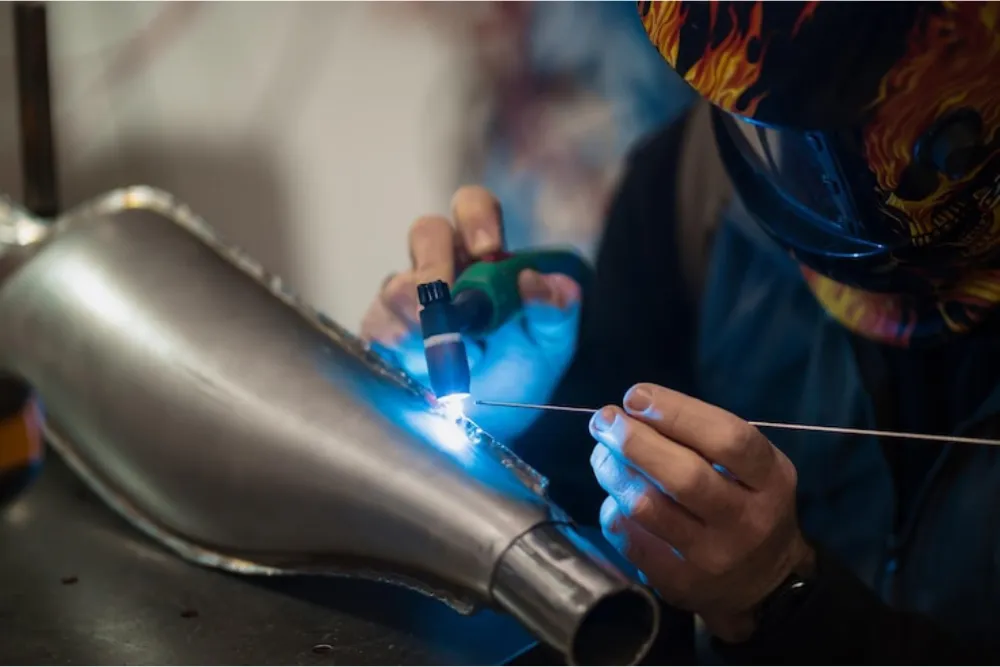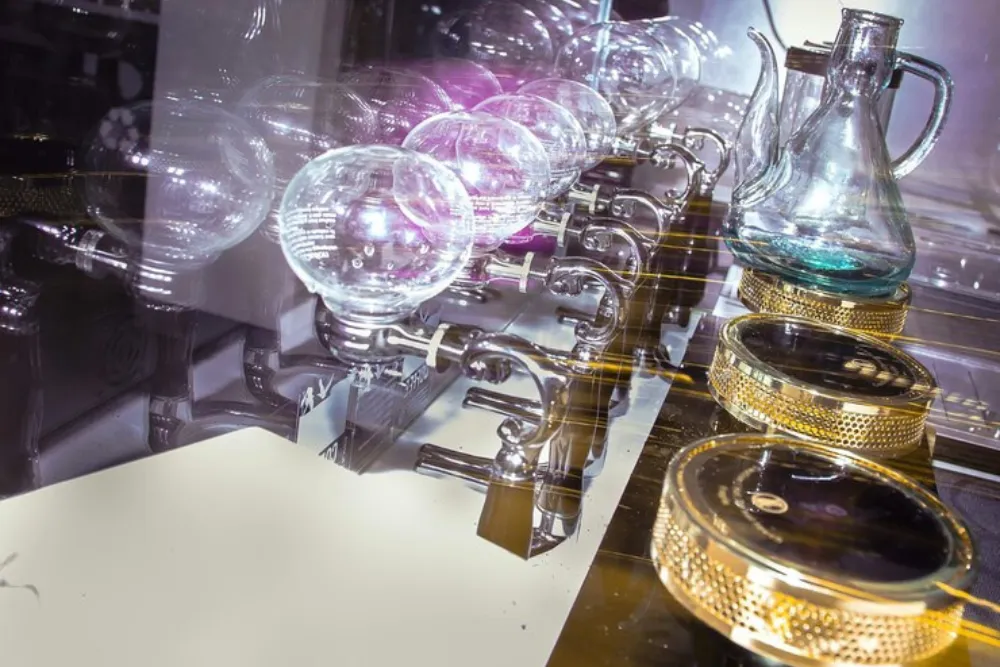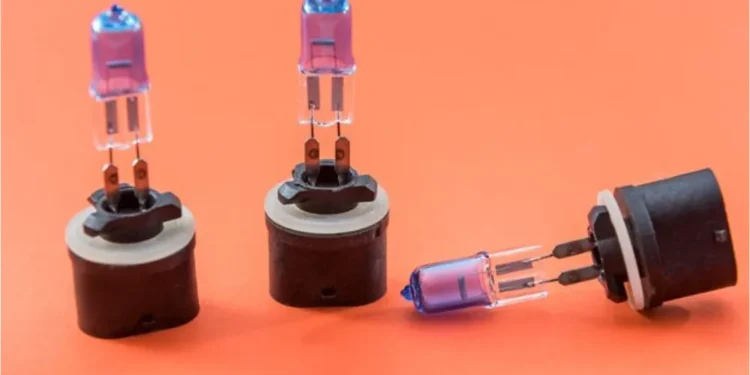If we want to know about plasma in technology, we need first to understand matter and its type; then, we differentiate between plasma and other kinds of matter. As we know, matter is composed of incredibly minor particles, some of which are so microscopic that humans cannot see them with the naked eye.
States of matter can be divided into four types; first is solids, in which particles are closely packed together, giving them a fixed, non-movable structure like a cube of ice. The second type is liquid, in which particles are less packed together as compared to the solids, and like solids, it doesn’t have a fixed shape; instead, its have no shape or takes the shape of the object in which its contains like if we put water in a volumetric cylinder its take the of the shape of its, the third one is gases in which particle are apart from each other due to which force of intermolecular is less.
What Is Plasma, And How Do Its Links To Technology?
Plasma is the last and hidden type of matter, which is not common but have high values in terms of its properties. In the fourth state, the particles with very high kinetic energy make up the plasma. Noble gases are ionized by electricity to create illuminated signs, which are effectively plasma. It was discovered by William Crooks in 1879 but named by I. Langmuir in 1928.
Plasma in Technology
When we fuse plasma with technological devices, inventions are known as plasma in technology. The usage and application of plasma in numerous disciplines and sectors are referred to as plasma in technology. The highly ionized gas plasma, called the “fourth state of matter,” comprises positively and negatively charged particles. It is produced by supplying a gas with energy, which causes the gas’s atoms to gain or lose electrons and become ionized. Plasma in technology creates innovative tools and procedures using its unique characteristics.

How Plasma Generated
Plasma can be created through heat, electromagnetic fields, or both. Energy input dissociates atoms’ connections, creating an amalgam of charged particles by discharging trapped electrons.
Energy And The Environment
Plasma can clean the air, sterilize water, and treat trash. Plasma gasification is a process that uses high-temperature plasma to transform waste materials into clean energy.
In Which Devices Is Plasma Technology Used?
Plasma in technology, also used in televisions PDPs, or plasma display panels, were previously well-liked for its vibrant colours and rich blacks. The neon and xenon gases in these televisions are ionized by an electric current, which causes the gases to emit ultraviolet, or UV, light. Following the triggering of phosphors by UV radiation, visible light is produced. While LED and OLED panels have mostly replaced PDPs, they helped progress flat-panel display technology.
In cutting machines, plasma technologies are also used; Electrically conductive materials can be sliced through by the extreme heat of the plasma. These devices conduct an electric arc through a gas, such as nitrogen or oxygen, to produce a high-velocity jet of ionized gas known as plasma. The plasma can quickly melt through metal since it can reach temperatures up to 30,000 degrees Fahrenheit. Industries like automotive, construction, and metal production frequently use plasma cutting.
Plasma technology is also have been using in medical devices to sterilize them. Decontaminating medical equipment and surfaces with plasma sterilization is non-toxic and environmentally friendly. Low-pressure plasma sterilisers use plasma to kill bacteria, viruses, and other pathogens. The procedure involves exposing the items to a plasma gas mixture that produces reactive species like free radicals. These species break through the cell walls of microorganisms, altering their molecular structure and killing them. A quick, effective, and residue-free form of disinfection is provided by plasma sterilization.
In thrusters, plasma in technology is also used. Space research missions frequently use plasma power technologies. The ionization method of propellant gas and pushing the resultant ions via a field of electricity is utilized in ion thrusters, often called plasma thrusters, to generate thrust. Those thrusters offer highly accurate and efficient propulsion, allowing spacecraft to go farther while using less fuel. Several space missions have benefited from plasma thrusters by NASA’s famous space technological centre.
Plasma in technology is also part of manufacturing thin films that use deposition methods assisted by Plasma. These techniques use plasma to improve deposited materials’ adhesion, density, and quality.
Environmental Uses
Plasma technology is also converting other wastes into renewable energy using plasma in the gasification process, disposal of trash may be reduced, and environmental damage can be lessened. On the other hand, plasma in technology also reduces air pollution through the plasma-based system, efficiently reducing pollutants like volatile organic compounds and improving indoor and outdoor air quality. Plasma in technology has the potential to help clean up polluted areas by effectively cleaning contaminated soil and groundwater.
How It’s Beneficial In Human Health And Medicine
Plasma in technology can be used in medical procedures like cancer therapy, skin regeneration, and wound healing. Plasma-based devices can precisely target and kill cancer cells while leaving healthy tissue unharmed.
Bacterial biofilms, resistant to conventional antibiotics, have been demonstrated to be susceptible to elimination by plasma in technology. This may have significant effects on avoiding infections in hospitals.
Plasma technological-based methods can treat cavities, clean teeth, and enhance dental implants’ integration.
Plasma in technology aids in bleeding control during operations and trauma by promoting coagulation and hemostasis.

Energy Storage And Generation
In the search for scalable fusion energy, plasma confinement and control are essential components. Fusion reactors produce a lot of clean, practically endless energy if successful.
Plasma in technology allows internal combustion engines and gas turbines to operate more efficiently with fewer emissions.
The development of advanced energy storage technologies, such as supercapacitors or plasma-assisted batteries with high energy densities, may be aided by plasma-based devices.
Impossible Bocome Possible
Ion thrusters use plasma-based propulsion for faster, more fuel-efficient interplanetary travel. Plasma in technology could also extract valuable minerals and metals from asteroids for space missions and Earth’s industries.
Science Of Material And Its Manufacturing
Plasma-assisted deposition techniques enhance material performance and longevity in various applications by producing thin films with specific qualities. plasma in technology enables stretchable, flexible electronics, enabling wearable gadgets and displays. The nanofabrication process also involves plasma in technology, which allows Precision nanostructuring techniques to advance electronics, sensors, and medical technology.

Some Advantages And Disadvantages
Various businesses and professions, such as electronics, manufacturing, healthcare, and environmental cleanup, find uses for plasma in technology. Because of its adaptability, customized solutions can be created to meet specific demands.
Plasma technologies enable localized treatments and alterations because they provide excellent control and precision. In fields like surface engineering and microelectronics, this precision is instrumental.
Environmentally friendly alternatives to conventional processes are possible with plasma in technology. It frequently functions at lower temperatures, consuming less energy, and in some situations, it can replace the use of toxic chemicals. Techniques based on Plasma have the potential to lessen pollution and waste.
Fast and effective plasma processes have the potential to increase productivity and shorten processing times in a variety of applications. For instance, Plasma cutting devices provide quick and accurate metal cutting, which reduces waste and saves time.
Plasma technology effectively cleans the surfaces of the material, which causes the adhesive to be better and, ultimately, good surface energy and improves other qualities.
For plasma technology, new expensive, and advanced infrastructure is needed, and still labour as well, making the technology very expensive and not budget-friendly, and their installation is also kept very costly and causes more significant loss.
As to working with different high temperatures, different electric fields, and toxic gases, it prefers to give proper training to those working to workers and engineers or any researcher as well because if any poisonous gases are released from lab or industries, it’s highly damaged the environment as well. After a long time, many plasma phenomena are also undiscovered, so more and more research is needed for clarity so it can be implemented well.
When we range in high scaling, it’s also restricted to sizeable industrial scaling.so it’s better to consider a cost-effective material for the plasma technology process. and come in a budget quickly.
Conclusion : Plasma In technology
Plasma technology has revolutionized various fields, including gadgets, manufacturing, medicine, and space exploration. Researchers are exploring new applications and developing new instruments to harness this extraordinary material. Upcoming plasma applications offer genuine, precise, and sustainable solutions to challenging issues, showcasing the potential of plasma technology in various fields. Although it has some disadvantages, it depends on how we use it.
If we do hard work in the future and do more research on it, definitely in the coil, the hidden facts of nature that we still mow can’t be identified and used for humanity. If we stay consistent, we can do it better and inspire the young generation that if we innovate and explore new things, we become successful, face challenges, grow in the fast-growing world, and make changes in it.




















